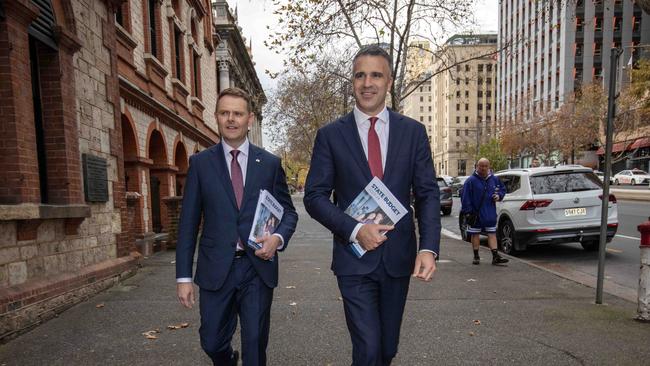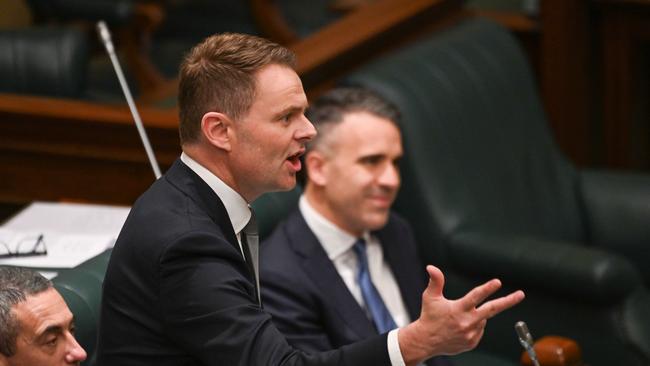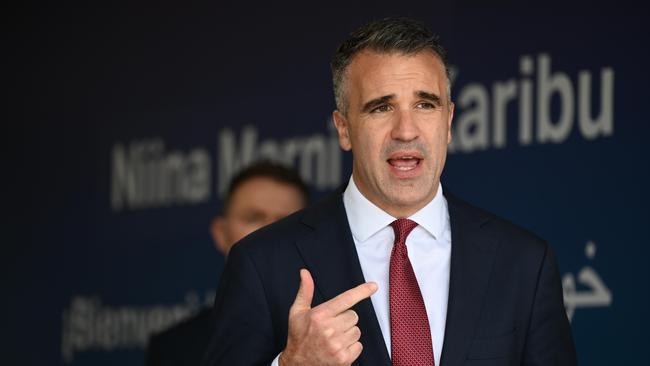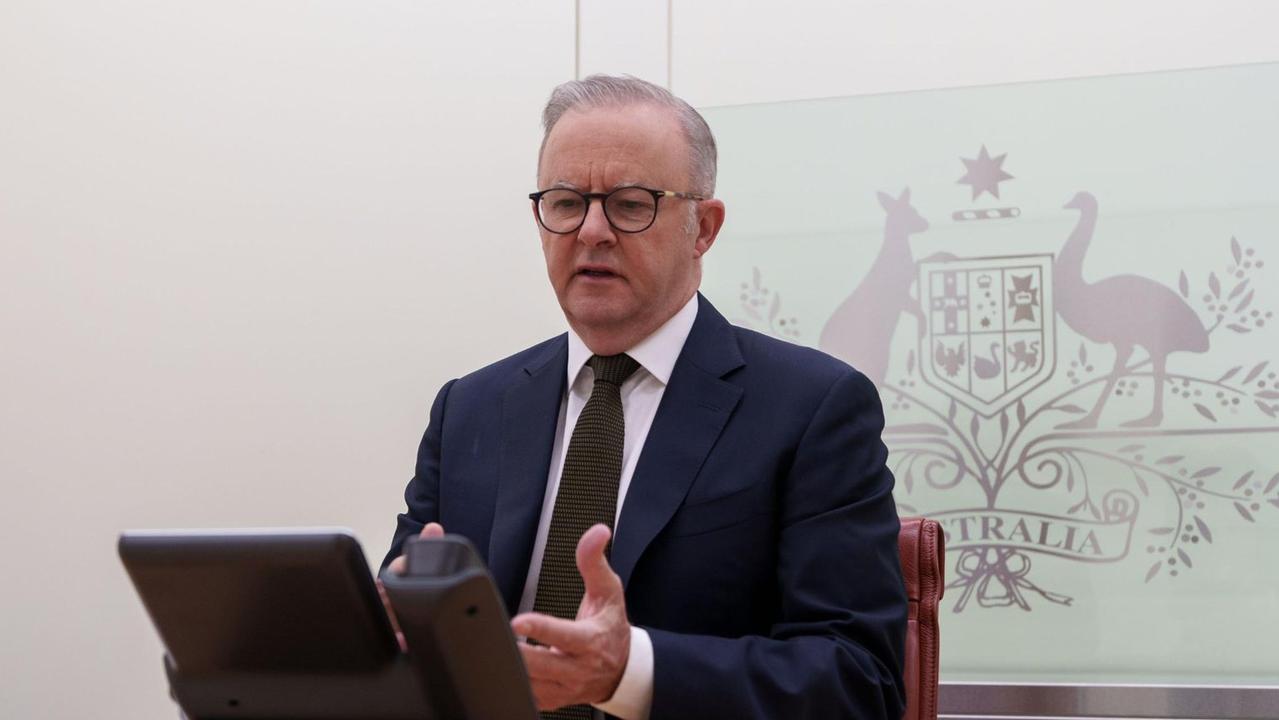David Penberthy: Peter Malinauskas can’t keep plucking money out of thin air to pay for health
Peter Malinauskas boldly pledged to fix ambulance ramping. Now the Premier is learning promises are easy in opposition but have to be paid for in government, writes David Penberthy.

Opinion
Don't miss out on the headlines from Opinion. Followed categories will be added to My News.
Politics is often described as “the art of the possible”. It’s a flawed definition.
It is government which is the art of the possible. Opposition is the art of the impossible – the shameless advocacy of concepts and solutions with no regard for their cost or achievability. Fix this, fund that, build this, upgrade that. How hard can it be? Really hard, as the Malinauskas Government is now learning one year after its election victory, as it tries to achieve what is possible with the available money to hand.
Thursday saw the delivery of Treasurer Stephen Mullighan’s second budget. It’s a document which shows how hard the reality of governing is, versus the ease with which solutions can be offered from opposition in the form of five-second grabs on the evening news, or condensed into six-word slogans on election posters saying things like “Labor Will Fix the Ramping Crisis”.
The vibe of Labor’s crushing win was that it wouldn’t just fix the ramping crisis but the entire public hospital system itself. In hindsight it was a lofty boast, given that in the previous term through the Transforming Health process, former Health Minister Jack Snelling found out how politically difficult root-and-branch health reform truly is.

We seem to be at a point now where Labor’s vision of fixing the health system involves throwing endless amounts of cash at it for as yet indiscernible gains. The budget itself is back in deficit due largely to health spending, and there is no real reason to believe the same thing won’t happen again in coming years, where projected surpluses get swallowed up by unforeseen and expanding health outlays.
Like a 12-point turnaround in a game of Aussie Rules, Stephen Mullighan last year forecast a surplus of $233m for 2022-23 but has instead handed down a $249m deficit. He insists he hasn’t dropped the ball, blaming the half-billion turnaround on $470m in unexpected health costs to cover extra demand on emergency wards due to GP shortages and unexpectedly high Covid admissions.
Mullighan must be the most put-upon member of the Malinauskas government. You can imagine him hiding behind filing cabinets at the State Administration Centre whenever he sees Health Minister Chris Picton approaching. Some of the new numbers in yesterday’s budget are eye-watering – $130m for virtual health care, $67.5m to fund more doctors’ shifts on weekends, $2.1m to build two new Hospital Avoidance Hubs in the northern and western suburbs based on the success of the two already operating in Sefton Park and Daw Park.
All this spending is aimed at keeping people out of hospital in the first place or getting them out of hospital faster once they are in there.
To that end the key question remains – is it working? Or has health instead become a bottomless pit of cash which no government has the capacity to tame, especially as our already-aged population lives longer and longer?
The overall cost of running health is underscored by one lesser but surprising outlay – the $2.2m upgrade of the ED triage and waiting room at the Royal Adelaide Hospital, which is pretty much brand new but already undergoing an apparently urgent redesign.
The current Opposition (being an opposition) argues that none of this money is making a sniff of difference. Their criticisms are backed up by month after month of ambulance ramping figures showing things have actually got worse since Labor got in. And again, while we all understand that Malinauskas did not say he would fix things overnight, no-one has any recollection of him saying they would probably get worse.
If the problem remains unresolved, there’s a crazy chance that Labor’s 2022 promises on ramping might stand as the tactic that was so stunningly big that it guaranteed them a surprise victory at the first election, and a shock defeat at the election after that.
While health will remain a millstone around this Government’s neck, there are plenty of things to like in this budget.
The biggest and best of these is the abolition of stamp duty for first homebuyers, benefiting every young person in SA who’s buying or building a new home valued at up to $650,000. This is hugely important in the middle of the cost of living squeeze, the worst manifestation of which is the housing crisis, with spiralling prices and limited stock hurting both homebuyers and renters.
The Government also deserves a tick for honouring its key promise not to increase taxes or introduce any new ones. When you look at the way other state governments behave on the tax promise question, it is worth recording and applauding the fact that the State Government has regarded that promise as non-negotiable.
There’s a big question remaining as to what sort of shape SA will be in towards the end of this parliamentary term, with the economy predicted to slow, unemployment likely to rise, and an uncertain future over interest rates, even the possibility of a recession. The one thing we know – as Stephen Mullighan learnt at his peril watching a surplus turn into deficit in record time – is that the one thing that will not slow is health demand and health spending.

Not having access to a bottomless pit of cash, the Government cannot keep plucking money out of thin air to pay for the ever-increasing needs of a health system in a world where people want to live forever. We will need some much more ambitious thinking around the abolition or reduction of taxes, to free up business to grow and expand, if we are going to make the state more economically dynamic than it currently is. There’s a lack of ambition here that will have to be addressed in the coming years. One idea floated a few years ago – by none other than Peter Malinauskas when he was running the retail union – was to simply scrap payroll tax. But it’s easier to throw those ideas around when you’re not in office, as opposed to when you’re the government, and tasked with tackling the art of the possible.





